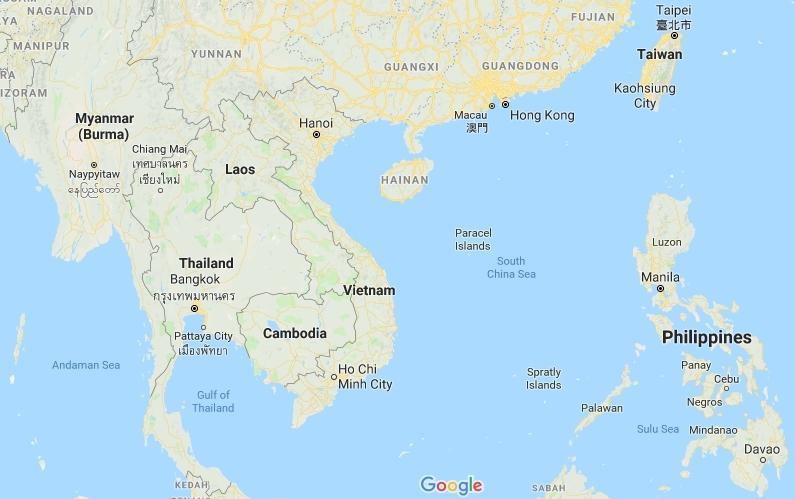The Financial Reality Of Offshore Wind: Why Costs Are Pushing Back Investment

Table of Contents
High Initial Capital Expenditure (CAPEX)
The sheer scale of offshore wind farm construction necessitates enormous upfront investments. This high initial capital expenditure (CAPEX) is a major barrier to entry for many developers.
The Cost of Turbine Installation and Infrastructure
Building an offshore wind farm is a monumental undertaking. The costs associated with installing turbines and constructing the necessary infrastructure are staggering. This includes:
- Foundation Types: The choice of foundation—monopiles, jacket structures, or floating platforms—significantly impacts costs. Floating platforms, suitable for deeper waters, are particularly expensive.
- Subsea Cable Installation: Laying and protecting subsea cables, which transmit power from the turbines to shore, is a complex and costly process. Cable faults can lead to significant downtime and repair costs.
- Grid Connection Infrastructure: Integrating offshore wind farms into existing electricity grids requires substantial investment in onshore substations and transmission lines. The cost of grid upgrades can be substantial.
For example, the cost per megawatt (MW) installed can vary drastically by region, from around $3 million in favorable locations to over $6 million in more challenging environments, greatly impacting the overall financial feasibility of projects.
Supply Chain Bottlenecks and Material Costs
The offshore wind industry faces significant challenges in securing the necessary components and materials in a timely and cost-effective manner.
- Steel Prices: Fluctuations in steel prices, a key component in turbine construction and foundations, directly impact project costs.
- Component Manufacturing Delays: Delays in the manufacturing of turbines, subsea cables, and other components can lead to substantial cost overruns and project delays.
- Skilled Labor Scarcity: A shortage of skilled labor for installation and maintenance further increases costs.
Geopolitical instability and global supply chain disruptions have exacerbated these issues, leading to delays in several high-profile projects. For instance, the recent global chip shortage has impacted the availability of crucial components for wind turbine control systems.
Operational Expenditure (OPEX) Challenges
Beyond the initial investment, offshore wind farms incur significant operational expenditures (OPEX) throughout their lifespan.
Maintenance and Repair Costs
Maintaining and repairing offshore wind turbines is a complex and expensive process. Accessibility is a major challenge, requiring specialized vessels and skilled technicians.
- Offshore Access: Reaching turbines in harsh marine environments requires specialized and expensive vessels, increasing maintenance costs.
- Turbine Repairs: Repairing or replacing faulty components is time-consuming and costly, often requiring significant downtime.
- Extreme Weather Events: Offshore wind farms are vulnerable to extreme weather events, leading to potential damage and costly repairs.
The OPEX for offshore wind is generally higher than that of other renewable energy sources like solar or onshore wind, necessitating careful planning and risk management.
Decommissioning Costs
At the end of their operational life (typically 20-25 years), offshore wind farms require dismantling and removal. This decommissioning process incurs significant costs.
- Environmental Regulations: Strict environmental regulations govern the decommissioning process, further increasing costs.
- Waste Management: Responsible disposal of components and materials is crucial, adding to the overall decommissioning burden.
- Technological Challenges: Removing large structures from the seabed presents significant technological and logistical challenges.
Estimates for decommissioning costs vary widely depending on the size and type of wind farm, but they represent a considerable long-term financial commitment that needs to be factored into project planning.
Financial Risks and Investment Barriers
The high capital intensity of offshore wind projects introduces several financial risks that can deter potential investors.
Permitting and Regulatory Uncertainty
The permitting process for offshore wind farms is often lengthy and complex, involving numerous stakeholders and agencies.
- Environmental Impact Assessments: Thorough environmental impact assessments are required, potentially leading to project delays.
- Regulatory Approvals: Securing all necessary regulatory approvals can be a protracted and costly process.
- Community Consultations: Engaging with local communities and addressing concerns can impact project timelines.
Permitting delays have been a significant factor in slowing down the development of offshore wind projects in many regions.
Power Purchase Agreement (PPA) Risks
Securing long-term power purchase agreements (PPAs) at competitive prices is crucial for project financing.
- Price Volatility: Fluctuations in electricity prices can impact the profitability of projects.
- Default Risk: The risk of a buyer defaulting on a PPA agreement can have significant financial implications.
- Counterparty Risk: Careful selection of counterparties is crucial to mitigate this risk.
Robust financial models and risk mitigation strategies are essential to address the uncertainties associated with PPAs.
Insurance and Financing Challenges
Securing adequate insurance and financing for high-risk, capital-intensive offshore wind projects presents significant challenges.
- High Premiums: Insurance premiums for offshore wind farms are typically high due to the inherent risks.
- Limited Investor Pool: The high capital requirements can limit the pool of potential investors.
- Government Support: Government subsidies and incentives play a crucial role in mitigating these financing risks.
Attracting investors and securing project finance requires a strong track record, detailed financial modeling, and often, government support.
Conclusion
The financial reality of offshore wind is characterized by high initial capital expenditure (CAPEX), significant operational expenditure (OPEX), and substantial financial risks associated with permitting, PPAs, and financing. These challenges significantly impact investment and deployment rates, hindering the widespread adoption of this crucial renewable energy technology. To unlock the full potential of offshore wind, further research and discussion are urgently needed focusing on innovative financing models, technological advancements that reduce costs, and supportive policy solutions. Learn more about initiatives aimed at streamlining the permitting process, developing more cost-effective technologies, and creating more attractive investment opportunities within the offshore wind sector. Addressing the financial realities of offshore wind energy is paramount for achieving a sustainable energy future.

Featured Posts
-
 Heatwave Sweeps Across Five South Bengal Districts Take Precautions
May 04, 2025
Heatwave Sweeps Across Five South Bengal Districts Take Precautions
May 04, 2025 -
 Ufc Fight Night Predictions Cory Sandhagen Vs Deiveson Figueiredo
May 04, 2025
Ufc Fight Night Predictions Cory Sandhagen Vs Deiveson Figueiredo
May 04, 2025 -
 The Los Angeles Wildfires A Reflection Of Our Changing Relationship With Disaster And Betting
May 04, 2025
The Los Angeles Wildfires A Reflection Of Our Changing Relationship With Disaster And Betting
May 04, 2025 -
 A Comprehensive Review Of The Count Of Monte Cristo
May 04, 2025
A Comprehensive Review Of The Count Of Monte Cristo
May 04, 2025 -
 Investigation Into Death Threat Afghan Migrants Journey To The United Kingdom And Alleged Threat Against Nigel Farage
May 04, 2025
Investigation Into Death Threat Afghan Migrants Journey To The United Kingdom And Alleged Threat Against Nigel Farage
May 04, 2025
